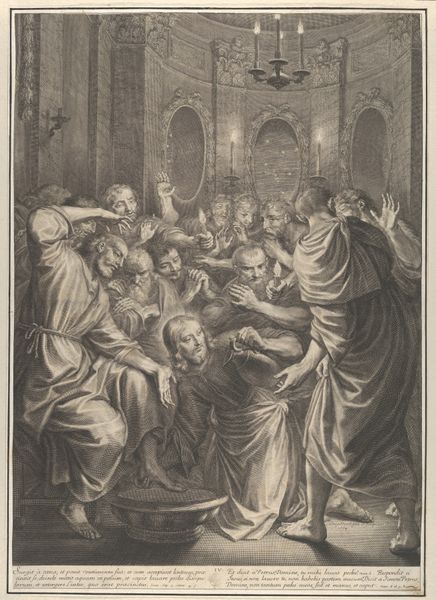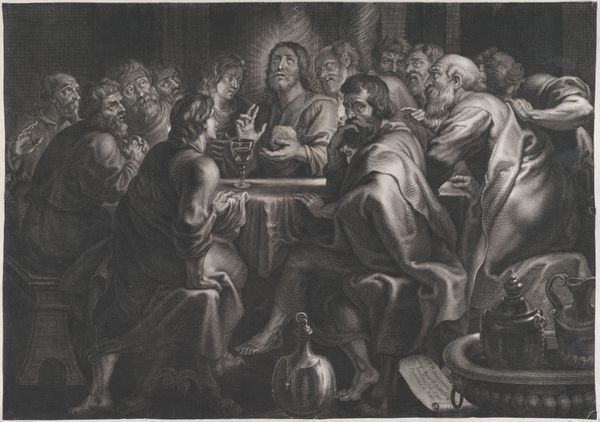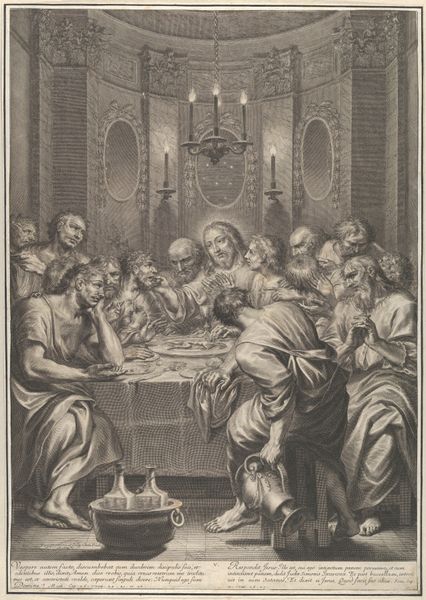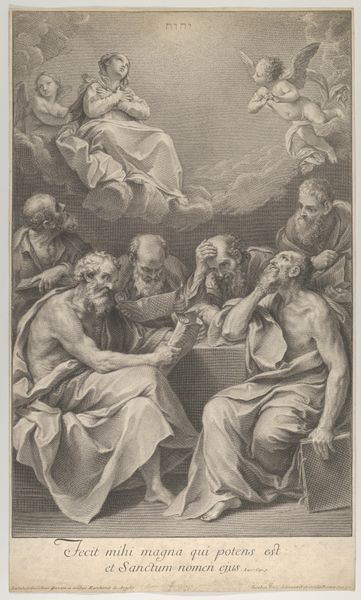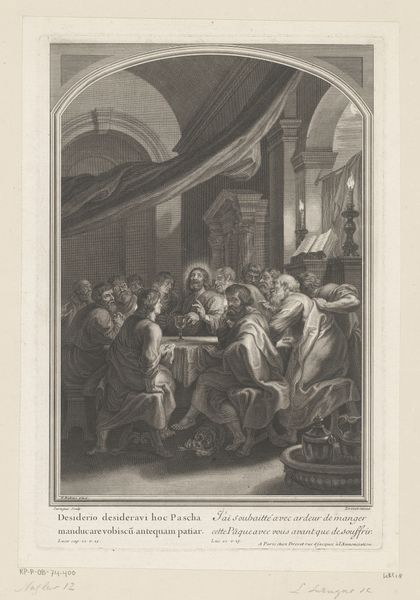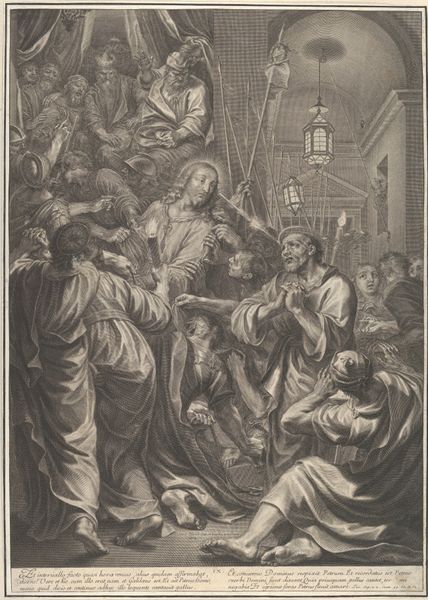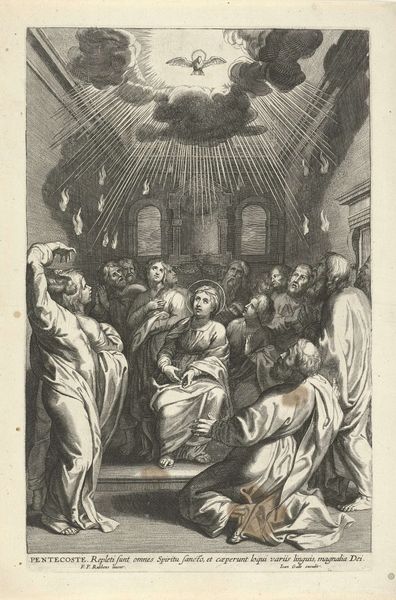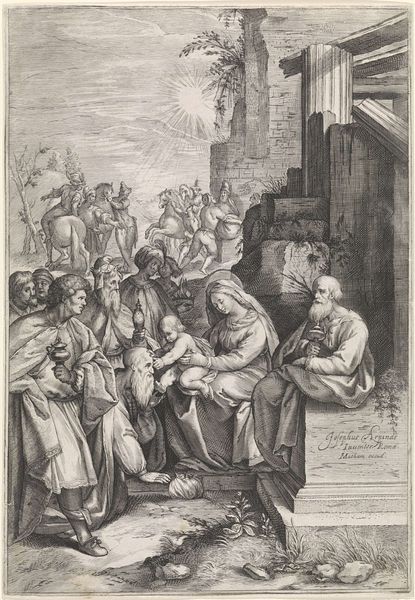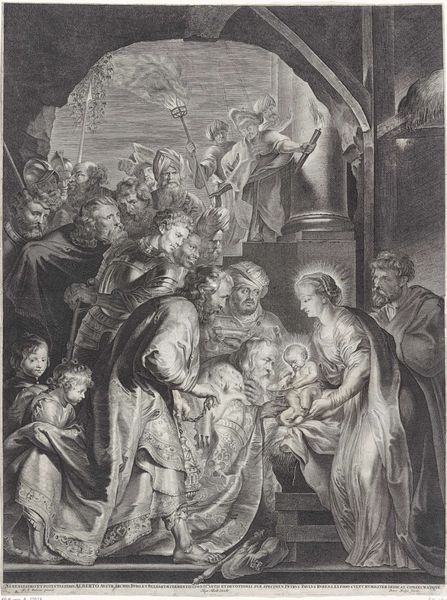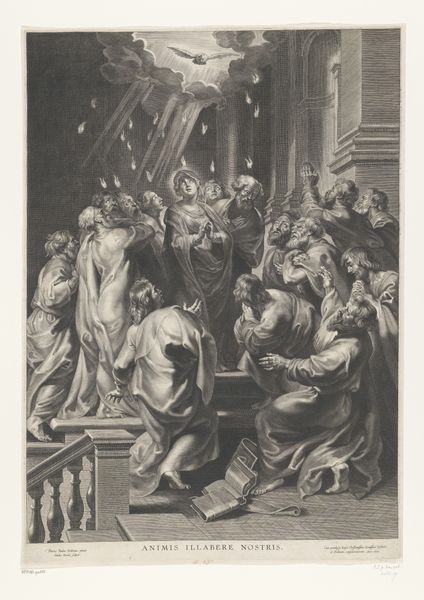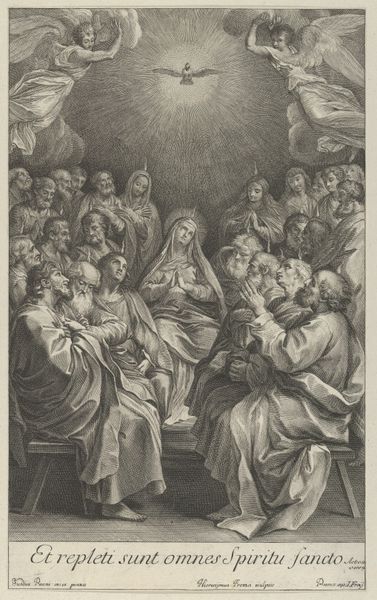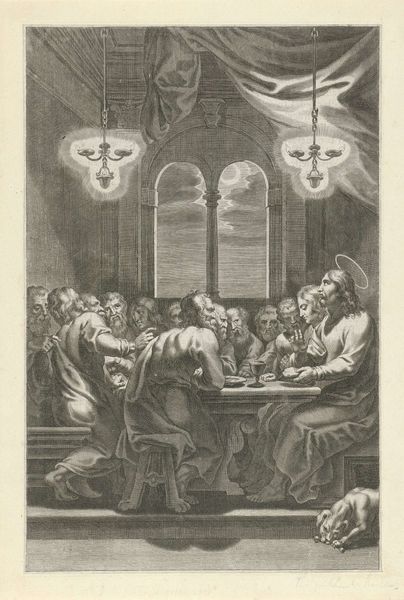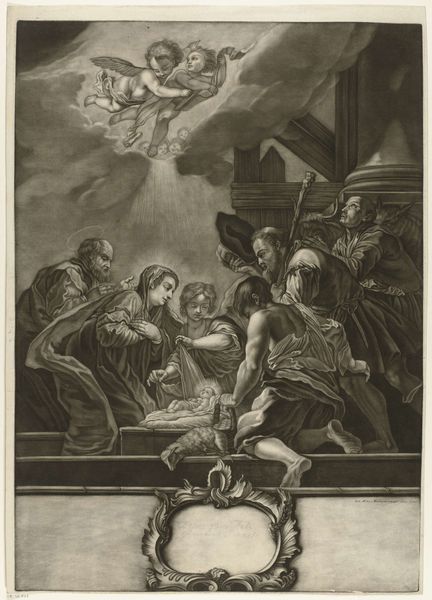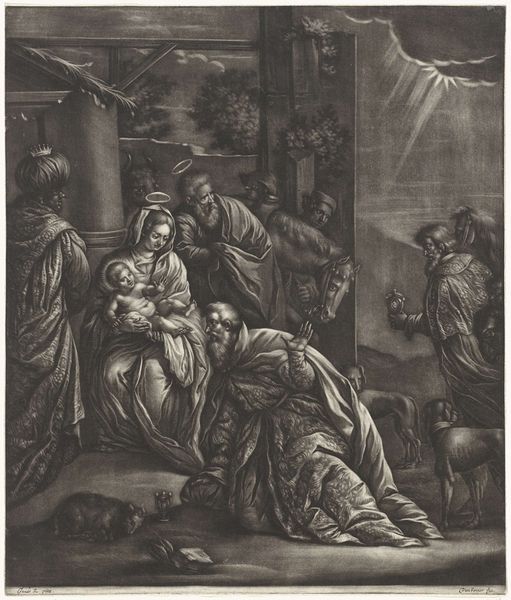
Christus en apostelen tijdens het Laatste Avondmaal 1590 - 1633
0:00
0:00
boetiusadamszbolswert
Rijksmuseum
drawing, print, engraving
#
drawing
#
baroque
# print
#
charcoal drawing
#
figuration
#
line
#
genre-painting
#
history-painting
#
engraving
Dimensions: height 650 mm, width 494 mm
Copyright: Rijks Museum: Open Domain
Editor: So, here we have "Christus en apostelen tijdens het Laatste Avondmaal"—Christ and the Apostles at the Last Supper—an engraving from sometime between 1590 and 1633 by Boëtius Adamsz. Bolswert, currently residing at the Rijksmuseum. The detail achieved with just lines is remarkable! What emotional currents do you see flowing through this work? Curator: Observe how the dramatic lighting, typical of Baroque art, illuminates the central figures, Christ and a select few apostles. The faces display a range of reactions - shock, concern, denial. This highlights a pivotal moment filled with immense psychological weight: the institution of the Eucharist and the foreshadowing of betrayal. Notice the table. What do you make of the items depicted upon it? Editor: There’s a chalice, some bread… standard Last Supper iconography, wouldn’t you say? Is there something more specific? Curator: Think about the function and placement. The chalice, centrally located, becomes a focal point, signifying the blood of Christ. But note its relationship to the gestures around it – reaching, questioning, hesitating. This visual interplay encourages meditation on sacrifice and covenant. Consider how the very *act* of sharing a meal, of communal participation, evolves into something infinitely more complex and fraught with meaning. What of the domestic setting; does that add something? Editor: It certainly humanizes the event. Makes it feel more intimate, even with all those people. It connects the divine with ordinary life. I hadn't really considered that. Curator: Exactly! And that interplay is at the heart of much religious art: the translation of the eternal into terms accessible, and relatable, for believers throughout time. It uses potent symbols to touch upon our deepest anxieties and hopes. Editor: I see it now. It's much more than just a historical depiction. The symbols elevate it. Thanks for shedding light on it.
Comments
No comments
Be the first to comment and join the conversation on the ultimate creative platform.
